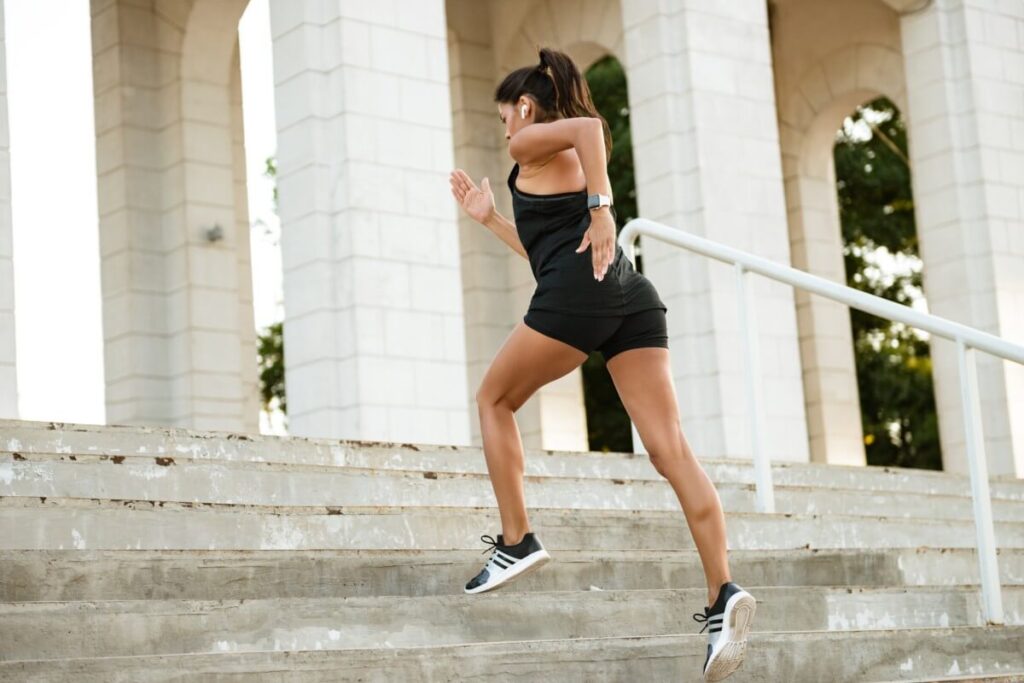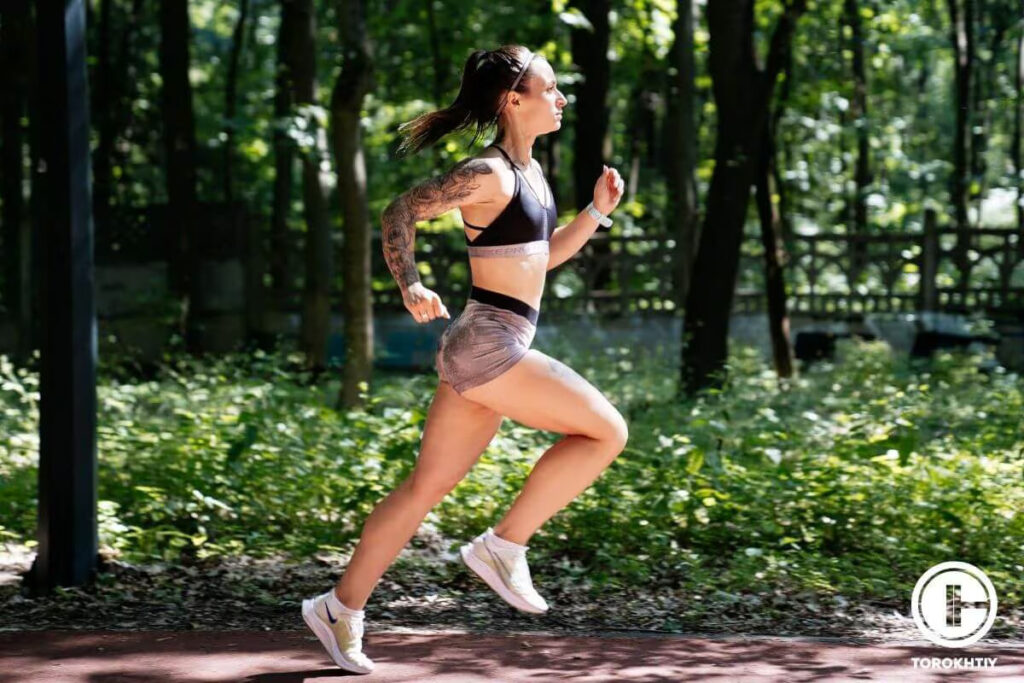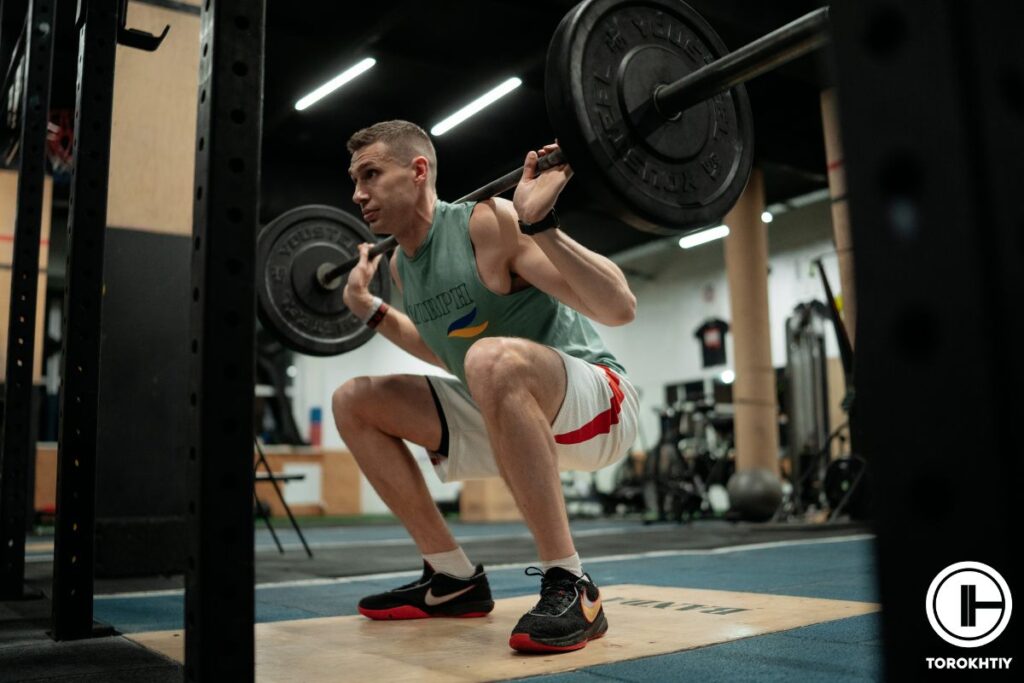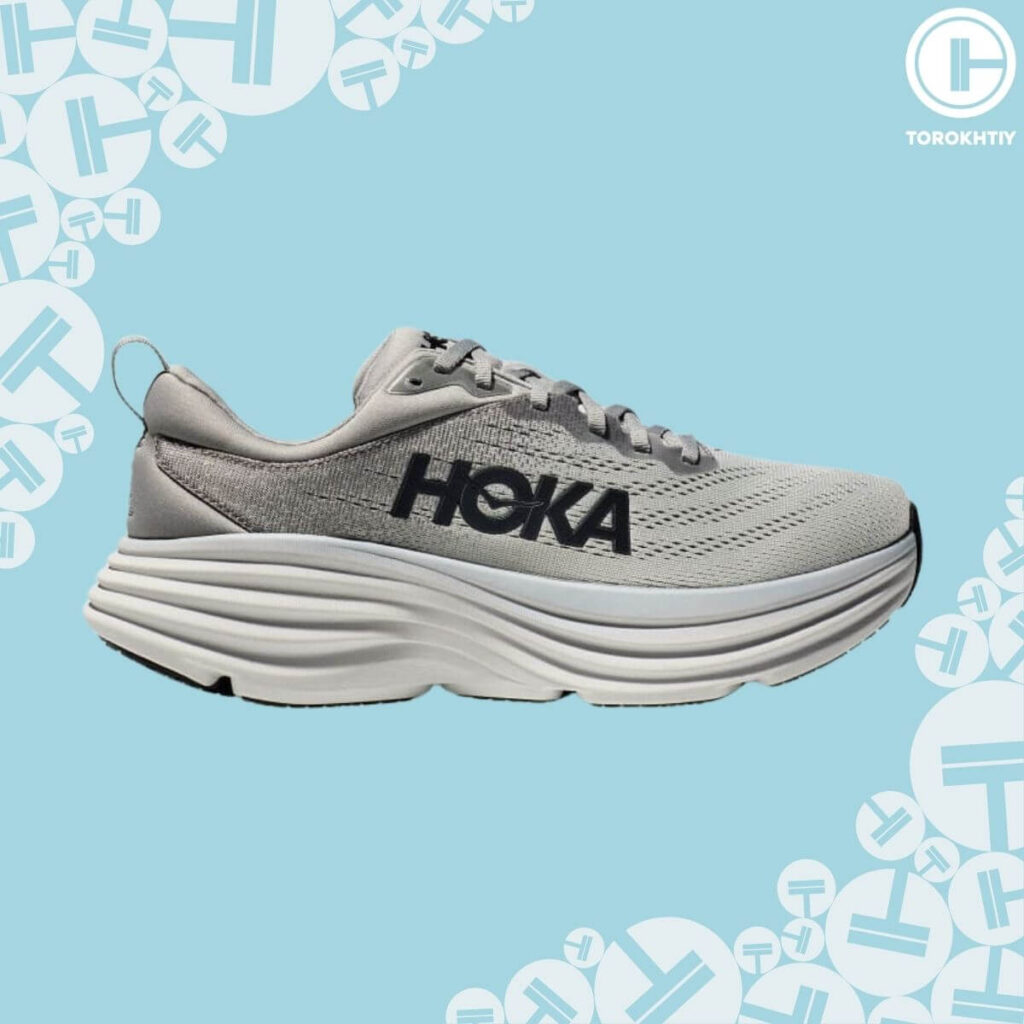Good Time For Running A Mile: Average Results and Helpful Tips
Author:
Unlock your full potential by engaging with our experts and community! Have questions about your fitness journey or looking for expert advice on weightlifting techniques? Don’t hesitate — leave a comment below and Oleksandr Zagrebelnyi will provide a personalized answer and insights to help you reach your goals.
Torokhtiy is reader-supported. Some links are affiliate links, and we may earn a commission at no extra cost to you. See our disclosure page for details.
Running is a great way for people to get started on their fitness journey. If you’re interested in seeing how your running is progressing, you should be keeping track of your mile times. So, what is a good time for running a mile? Read on as we break down everything runners should know.
Running a mile in 12 to 15 minutes is a good time for beginners. More experienced runners should be able to complete a mile in 10 minutes. These are average times that don’t apply to every runner. Some factors can affect your time, such as age, gender, and weight.

How Long Is A Mile Run and What Is A Good Mile Time?
Everybody is at a different point in their fitness journey. What is a good time for one runner might be completely different for the next. On average, a good time for beginners is 12 to 15 minutes. If you’re not at this time yet, that’s okay. With steady practice, you could bring your time up.
Runners with more experience are better at maintaining a pace. This is why they can usually get the mile done within 10 minutes.
Pro Tip
Now, you might be interested in tracking your own mile time to see where you stand. So, how do you know how long a mile is? 1 mile is 5,280 feet or 1.6 kilometers. However, a better way to give you an idea of a mile’s length is by using a standard running track. Four laps around a running track are equivalent to a mile.
Running Coach Nike Run Club Kyiv
What Are The Current Fastest Mile Times?
The human body can do some incredible things. This includes running at high speeds and finishing 1 mile in minutes. The fastest mile time currently recorded is less than 4 minutes. Hicham El Guerrouj holds the record for completing a mile in 3:43:13 in 1999. The female with the fastest recorded time to date is Sifan Hassan with a time of 4:12:33 in 2019.
What Are The Current Average Mile Times By Age & Sex?
The numbers we mentioned above are average times. Many factors go into determining how long a good mile time is. After all, a good time for an athletic 22-year-old male will be completely different from a 67-year-old woman who rarely works out.
Are you wondering “how fast should I run a mile?”. To give you a better idea of what your average mile run time should be, look at the following charts to find your age group.
Table with the Males Average 1 Mile Run Time By Age
| Age | Time |
|---|---|
| 16 to 19 | 9:34 |
| 20 to 24 | 9:30 |
| 25 to 29 | 10:03 |
| 30 to 34 | 10:09 |
| 35 to 39 | 10:53 |
| 40 to 44 | 10:28 |
| 45 to 49 | 10:43 |
| 50 to 54 | 11:08 |
| 55 to 59 | 12:08 |
| 60 to 64 | 13:05 |
| 65 to 99 | 13:52 |
Table with the Average Female Mile Time
| Age | Time |
|---|---|
| 16 to 19 | 12:09 |
| 20 to 24 | 11:44 |
| 25 to 29 | 11:42 |
| 30 to 34 | 12:29 |
| 35 to 39 | 12:03 |
| 40 to 44 | 12:24 |
| 45 to 49 | 12:41 |
| 50 to 54 | 13:20 |
| 55 to 59 | 14:37 |
| 60 to 64 | 14:47 |
| 65 to 99 | 16:12 |
What Factors Can Impact Your Mile Time?
Is your time different from the suggested good time for a mile run in your age group? Your age and gender aren’t the only things that impact how fast you can run. Let’s take a closer look at some other factors that can impact your mile run time.
1. Personal Fitness
One of the main factors that affect how long it takes a person to run a mile is their own personal fitness. Someone who is just starting out shouldn’t expect to have the same times as someone who has been running every week for the past 3 years.
If you’re starting out, don’t be discouraged by your time. At this stage, it’s more important to put focus on your form and technique than it is to worry about your pace. With steady practice and commitment, your mile run time can gradually improve.
2. Flat Terrain vs Incline
There will be a difference in time when you compare a mile run on flat terrain vs inclines. It takes more energy to run uphill than it does to run on a flat surface. Even experienced runners have a longer mile run time when they run on an incline. Your muscles will get tired sooner from running uphill.
If your main goal is to improve your time and keep up a pace, then we suggest practicing on a flat surface. However, when you’re happy with your mile run time and want more of a challenge, an incline run is a fun way to achieve this.

3. Weather Conditions
Climate can play a role in your run time as well. If you run indoors on a treadmill, then this section won’t apply to you. However, if you prefer to run outdoors, then you might want to know how the weather impacts your run time.
Both winter and summer weather conditions can affect your run. If you live in a cold climate, you might find it more challenging to run outdoors in the winter. The snowy and icy conditions can present hazards for slipping. Even if the area where you want to run has been cleared, the cold weather can make it difficult for your muscles to warm up.
The conditions for running are safer in the summer months. But, when a heatwave strikes, running outdoors could become very difficult. The hot weather and humidity will make you feel tired sooner. It can also cause runners to become dehydrated easier.
Another factor to consider about running outdoors in the summer is the lack of wind. When there are clear skies, there’s less of a breeze. This may not be something you think of beforehand, but a natural wind helps to cool people off as they’re running.
4. Your Body
When it comes to any kind of physical activity, experts recommend listening to your body. If your body is feeling nourished and energized, then it’s a good time for a run.
However, if you’re feeling sore or have recently hurt a muscle, then you should give yourself a break. Forcing yourself to run when your body isn’t ready won’t improve your time. Always give your body time to recover when needed.
The size of your body also affects your time. You may have noticed that smaller people seem to have better running times. This is true because they have less body weight to carry. If you are tall or overweight, then your body will need to work harder than someone petite to keep up the speed.

How To Improve Your Mile Run Times?
Now that you know that average mile run time by age, you’ll have a better idea of what you need to work towards. If you’re not at the average time yet, that’s okay. Running a mile isn’t a race. Let’s take a look at some expert tips on improving your run times.
1. Set Your Goals & Keep Track
The first step in your journey is to set your goal. Remember, goals don’t happen overnight. Aim to set a realistic goal that you can make a plan to work towards. It also helps if you make a plan on how you want to achieve this milestone.
Once you start running towards this goal, we suggest keeping track of your progress. You could keep a journal that includes your running times, distances, and how your experience went.
Step Distance Estimation Calculator
Use our calculator to estimate the distance based on the average step length and height of the runner. This will help you better understand what aspects you need to focus on.
Distance Calculator
Result:
2. Maintain Proper Form & Breathing
Before you start concentrating on speed and distance, you should focus on proper form and breathing. Your form is essential for reducing the risk of injury. This is why it’s important to maintain good posture and avoid rotating your torso.
Breathing properly is also important for your health and safety. If you get to a point where you’re struggling to breathe, then you need to slow down your pace. You should be able to breathe naturally using your mouth and nose. Keep a pace in which you can still hold a conversation if needed.
3. Wear Proper Footwear
Wearing the right footwear can make or break how your running experience goes. When you run, your foot has a hard impact on the ground. If your footwear doesn’t provide the right type of support, you could hurt your feet.
Make sure you run in the proper running shoes that you have tried on. Running shoes are durable and made to support your foot. The soles provide cushioned support, so your body doesn’t feel the impact of your run.
Good-quality running shoes are also better for reducing the risk of injury because they’re slip-proof. This means that you’re less likely to fall if the ground is wet.
Hoka Bondi 8
- Material: Breathable and supportive mesh upper
- Sole Material: Full-length EVA midsole for maximum cushioning
- Outsole (tread feature): Durable rubber outsole with a unique lug pattern
- Drop: 4mm
- Season: Suitable for all seasons
- Special Features: Exceptional cushioning and comfort
- Size: Available in various sizes
- Type: Maximum cushioning running shoe
If you want excellent running or walking shoes or just footwear you’ll be comfortable in, you can’t go wrong with the Hoka Bondi 8.
It’s been upgraded and now they have lighter, softer materials and a new extended heel design. The heel design gives a super soft, balanced feeling from th emoment your heel hits the ground to when you push off with your toes.
As far as the weight goes, it’s around 10.80 ounces, and the heel drop is 4 mm. They’re not too heavy and the lower drop is a good balance between cushioning and feeling connected to the ground.
The Bondi 8 is focused on cushioning and keeps things simple. There’s a good amount of support without any extra stuff that you don’t really need and that would only jack up the price. Take the rear crash pad, for example – it makes for a soft, smooth ride, which is perfect if you like to run outdoors.

The Bondi 8 is focused on cushioning and keeps things simple. There’s a good amount of support without any extra stuff that you don’t really need and that would only jack up the price. Take the rear crash pad, for example – it makes for a soft, smooth ride, which is perfect if you like to run outdoors.
The upper part is made of engineered mesh, which is breathable and keeps your feet cool and dry. The tongue and collar have memory foam and mold to your foot shape. All of these features make the fit snug but flexible, which is exactly what you would want.
The Bondi 8 is eco-friendly because it uses recyclable materials in parts like the mesh and the sockliner. Plus, the shoes are completely vegan, which (if that’s important to you) is nice!
4. Alternate Your Workouts
Running is an excellent workout with many great health benefits. But, if you want to improve your running, then you need to do other workouts as well. Strength workouts are just as important because they help to build and strengthen muscles.
When your muscles are stronger, you will be able to run faster for longer. Additionally, running can help you keep your muscles toned and defined.

5. Fuel & Hydration
Your body needs food to fuel itself for a run. Healthy eating habits can help provide your body with enough energy to run. A protein-rich snack after a run can also help your muscles recover after the workout.
Hydration is also important. Experts recommend drinking water before and after a run. It’s also recommended to drink water during a distance run if you’re running for 15 minutes or longer at a time. If you get dehydrated, your muscles could cramp up. This makes it more difficult to exercise.
6. Warm Up & Cool Down
Your muscles need to be prepared for a run. That is why it’s essential to warm up before running a mile. Perform a minimum of 5 minutes of stretching and light aerobic activity before your run.
These movements can help prevent an overuse muscle injury. Once you have completed your run, you should also perform a cool down to improve your blood flow and prevent muscle injuries.
FAQ
What is a good time for running up hill a mile?
When running uphill, you should add 1.74 seconds to your time for every 10 feet of elevation to get a good time for your age and gender.
Is a 7 minute mile quick?
A 7 minute mile is very quick. This is a goal that’s appropriate for advanced runners. If you’re a beginner, this mile time may be too intense for you right now.
Conclusion
Running 1 mile is a realistic goal for runners at any stage. What is a good running time for a mile? Beginners should aim to run a mile in 12 to 15 minutes. However, more experienced runners can aim to complete this run within 10 minutes.
Also read:
References:
- Mile run world record progression // Wikipedia: https://en.wikipedia.org/wiki/Mile_run_world_record_progression
- How to Master Proper Running Form // Healthline: https://www.healthline.com/health/exercise-fitness/proper-running-form#running-form
- How To Stretch Before a Run—Properly // Yale Medicine: https://www.yalemedicine.org/news/how-to-stretch-before-run
- Photos are made by Torokhtiy Media Team, cookie_studio, drobotdean Freepick
Why Trust Us?
With over 20 years in Olympic weightlifting, strength training, nutrition coaching, and general fitness our team does its best to provide the audience with ultimate support and meet the needs and requirements of advanced athletes and professional lifters, as well as people who strive to open new opportunities and develop their physical capabilities with us.
By trusting the recommendations of our certified experts in coaching, nutrition, and sports training programming, as well as scientific consultants, and physiotherapists, we provide you with thorough, well-considered, and scientifically proven content. All the information given in the articles concerning workout programming, separate exercises, and athletic performance, in general, is based on verified data.
The product testing process is described in more detail here.
Oleksandr is a running coach and member of the Nike Run Club coaching team for 8 years. A participant in national and international competitions at distances from one kilometer to the ultra trail. Owner of mountain trail running camps. Nowadays Oleksandr is responsible for creating running training programs for athletes of various levels, coaching personally offline and online, conducts trail running camps in the mountains, participates in competitions.




Still have questions after reading our article? Unlock your full potential by engaging with our experts and community! Don’t hesitate — leave a comment below and Oleksandr Zagrebelnyi will provide a personalized answer and insights to help you reach your goals.